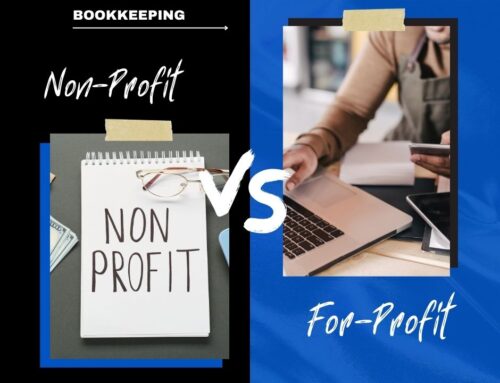As a small business owner, I’m sure you’ve heard the term “double-entry bookkeeping” at one time or another. But since you’ve landed on this page, I’m guessing you’re not sure what it means.
Don’t worry; you’re not alone. In my experience, I’ve learned that there are lots of misconceptions about double-entry bookkeeping.
It seems like when most people hear the words “double-entry” they just assume that it means double the work. Then they use that assumption to decide that they’re not going to use this method.
While double-entry bookkeeping isn’t necessarily the best approach for every business, it’s going to be the most ideal option for most of you.
In this guide, I’ll clarify exactly what double-entry bookkeeping means and how it works. You can use this information to determine if it’s the best choice for your company.
How Double-Entry Bookkeeping Works
It’s a simple concept. The purpose of the double-entry accounting method is to track where your money comes from and where it goes.
As the name implies, each transaction will have two entries:
- Debit
- Credit
For those of you who aren’t familiar with debits and credits, I’ll give a more in-depth explanation of these terms as we continue through this guide.
By recording each transaction with two entries, it gives you a more comprehensive overview of your financial statements. You won’t get this benefit if you’re using a system that’s more on the basic side of the spectrum, such as single-entry accounting.
Double-Entry vs. Single-Entry
For those of you who aren’t currently using double-entry bookkeeping, you’re probably using a single-entry system.
Single-entry bookkeeping means that each transaction gets recorded in one ledger. This includes everything from payroll to expenses, and revenue.
Lots of freelancers and sole proprietors use this method because it’s fast and easy. But those are really the only benefits of single-entry bookkeeping.
As your company scales and begins to grow, you need to switch over to double-entry accounting. Single-entry alone doesn’t give you enough information to generate the essential financial reports for small business bookkeeping.
- Balance Sheet
- Income Statement
- Cash Flow Statement
Creating these reports gives you the ability to learn more about your company’s overall financial situation. This is crucial for making decisions daily, as well as decisions that impact the long-term position of your business.
Understanding Credits and Debits
When you’re using double-entry bookkeeping, you need to know the difference between debits and credits. These two terms will be the foundation of your entire accounting system.
First, you need to know the general accounting equation:
Assets = Liabilities + Equity
When you’re using the double-entry method, every debit will always have a corresponding credit that’s equal to the same amount. This keeps the accounting equation in balance at all times. If the equation isn’t balanced, you know that there has been a bookkeeping mistake.
Here’s an example to show you what I mean.
Let’s say you purchase a new computer for $2,000. This transaction would require two entries, both affecting your assets. You would debit cash $2,000 and credit computers $2,000. This keeps the equation in balance.
I’ll give you one more example, only this time it will impact both sides of the accounting equation.
Let’s say you buy $5,000 worth of inventory from a vendor on credit. Your inventory (asset) would have a $5,000 debit and your accounts payable (liability) would have a $5,000 credit. Both sides of the equation remain balanced.
At first, it can be challenging to understand the distinction between debits and credits. Different transactions will affect the way debits and credits are recorded.
Here is a quick bullet list that you can use as a reference for these terms and how they work with double-entry bookkeeping.
Debits
- Recorded on the left
- Increase asset accounts
- Decrease liability or equity accounts
- Decrease revenue accounts
- Increase expense accounts
Credits
- Recorded on the right
- Decrease asset accounts
- Increase liability or equity accounts
- Increase revenue accounts
- Decrease expense accounts
Should You Use Double-Entry Bookkeeping?
There are pros and cons to both single-entry and double-entry bookkeeping.
For those of you who freelance or own a sole proprietorship that never has debt and doesn’t purchase any inventory, you can probably get away with single-entry.
But for any other business, I’d recommend double-entry bookkeeping.
Without double-entry accounting, you won’t see a complete picture of your company’s financial statements. This method tracks where your money comes from and where it goes. You will use this information to generate financial statements that will ultimately tell you how profitable your business is. You’ll also use these statements to make sound financial decisions about how you should spend your money moving forward.
Another benefit of double-entry accounting is that it limits the risk of errors made by your bookkeeper. If at any point in time the accounting equation doesn’t balance, you know that a mistake was made.
For those of you who plan to secure funding from investors, banks, or other lenders, you probably won’t be taken very seriously if you’re not using double-entry accounting or your reports won’t be accepted at all.
It’s also worth noting that if you using cloud-based accounting software, it’s probably going to have double-entry by default.
Conclusion
That covers the basics of double-entry bookkeeping.
So, is double entry right for your business? In short, yes. But you can always continue referring to this guide as a reference for helping you with that decision.
For those of you who still have questions or require further assistance with transitioning your finances to double-entry bookkeeping, you should consider working with a professional.
An outsourced bookkeeping service can handle all of this for you. This is definitely an option that you should consider, especially if you’re a small business or a startup company.





